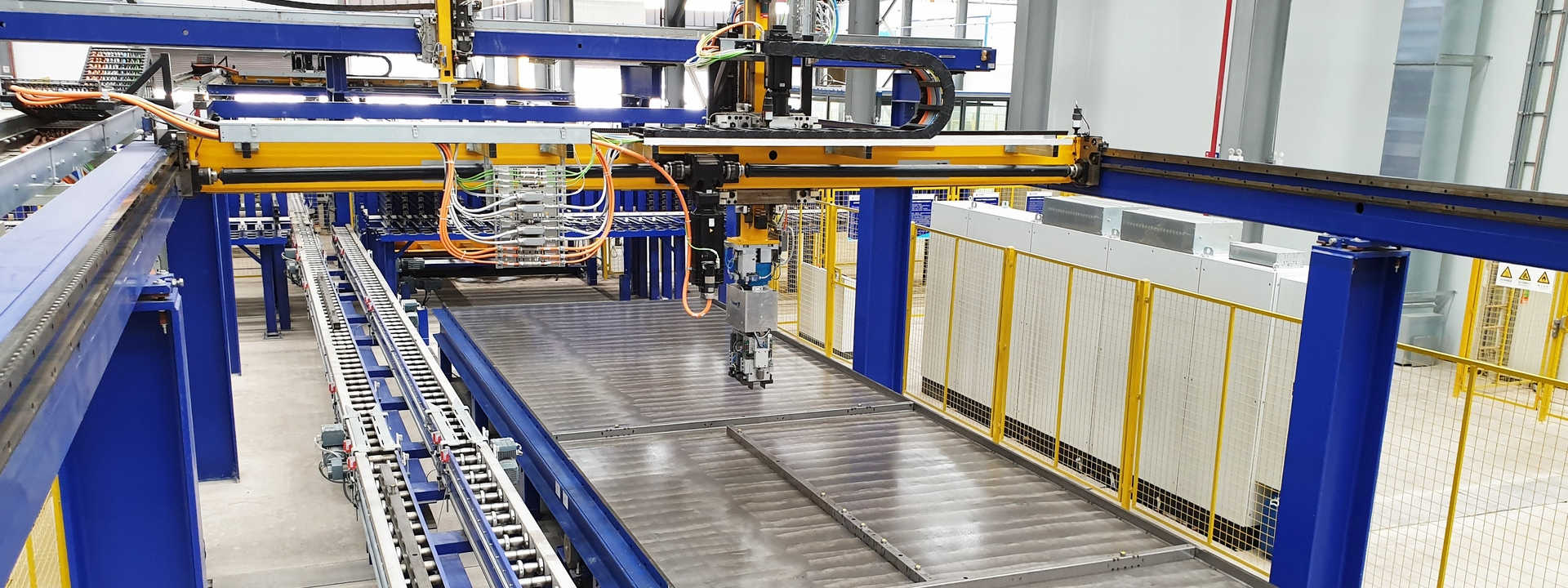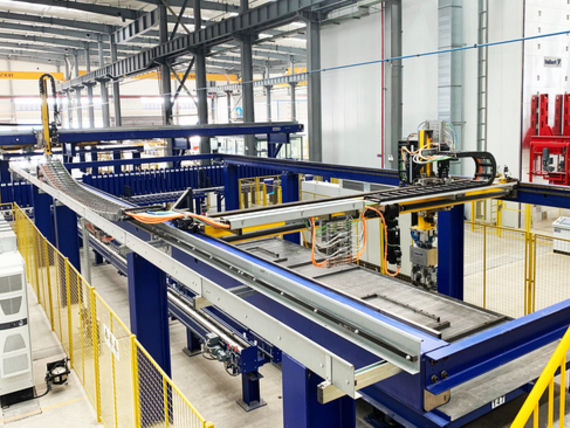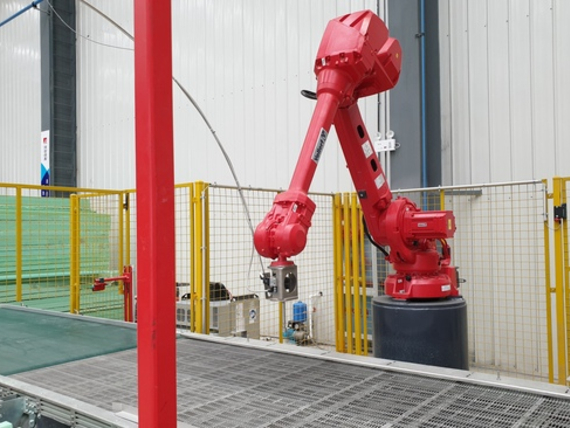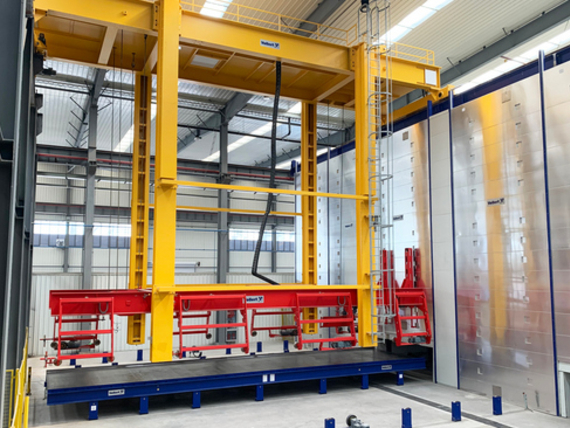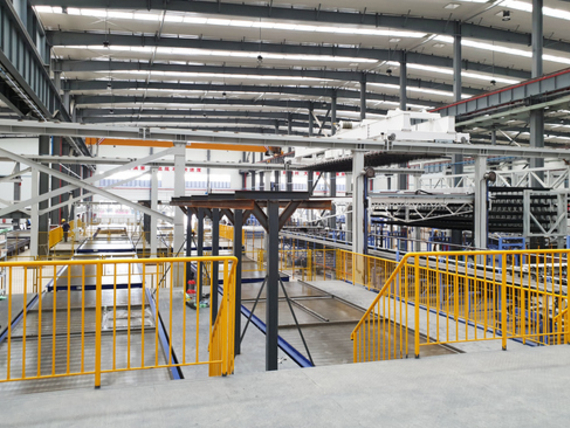China is experiencing increasing urbanization and the trend of population concentration in large cities is constantly strengthening. According to the "2018 Urban Construction Statistical Yearbook" published by the Ministry of Housing and Urban-Rural Development, there are 6 cities in the country with urban populations exceeding 10 million, 15 cities with urban populations exceeding 5 million, and 91 cities with urban populations exceeding one million. Residential districts and entirely new city districts are being created, as well as multifunctional shopping malls, hotel resorts, universities and schools. Nevertheless, demand continues to be unchecked. Immense residential construction projects are currently in the preliminary planning stage throughout the country. Affordable living space in the outlying districts and the growing conurbations is in high demand. From 2011 to 2013, China consumed 6.6 billion tons of cement, cement consumption in the construction industry in China was higher than in the USA during the entire 20th century.
Creating housing in the short term, with sustainable construction quality, high resource efficiency and adequate costs are among the main factors why China has committed itself to a uniform building system. Prefabricated buildings have also become an important direction for the transformation and upgrading of the construction industry, and have received policy support and vigorous promotion throughout the country. Industrially prefabricated concrete elements are not only characterized by very good energy efficiency values and high weather resistance, but also guarantee consistently high construction standards and, compared to conventional construction systems, lower construction costs and significantly shorter construction times. Precast concrete elements will reduce construction costs in China by 20 - 30% and create urgently needed living space. At the same time, the construction system today offers modern, stylish architecture and a feel-good atmosphere for the residents. With the current development of prefabricated buildings in the ascendant, the prefabricated building business of the MyHome Group has also ushered in broad growth prospects.
MyHome creates new dimensions in China's construction industry
The Wuhan-based MyHome group describes itself as an urban and rural construction service provider,actively promoting prefabricated buildings and realizing ´building a house like a car´. "Prefabricated construction is a new area of development in China, and better property is a big player in this market", is how Björn Brandt, Member of the Board at system specialist Vollert, describes the corporate philosophy of the real estate developer and construction company. MyHome Group currently has 8 precast factories in production, each with an annual design capacity of 300,000 m³, which can be used for engineering projects with a construction area of 4,000,000 m2. The activities of the MyHome Group extend from Wuhan and the associated province of Hubei to Beijing, Shenzhen, Chongqing, Shenyang and other major cities throughout China.
"The digitalization of the architecture and construction process is a key element of MyHome's sustainable overall strategy for the creation of attractive, affordable living space," explains Björn Brandt. To successfully implement these growth plans, MyHome has decided to use YTWO technology, an end-to-end cloud-based 5D BIM enterprise platform. The YTWO technology, which emerged from a joint venture between the US technology provider Flex and RIB Software SE, makes the MyHome Group a pioneer in China to link up to 600 project partners such as contractors and subcontractors in a collaborative BIM software. In the future, this is expected to save up to 30% of costs in the construction process and project management, while at the same time significantly increasing the added value. The focus is on a uniform, integrated construction system with semi-precast concrete elements, which has been consistently adapted to the Chinese framework conditions. The industrial prefabrication of the precast concrete elements is carried out with highly automated plant technology in several giga factories. Daoming Liu, Chairman of the MyHome Group, describes it as a transformation process that is indispensable to realize the construction visions that have been set. "At present, the currently running factories are set up in Wuhan Jiangxia, Qingdao Jimo, Hefei Feidong, Hubei Jingzhou, Chongqing Jiangjin, Changsha Miluo, Henan Xinxiang and Chengdu Jintang. In addition five more precast plants are under construction and are expected to be completed in 2020 and 2021." After all 13 factories are put into operation, providing strong support for the development of the company's intelligent prefabrication building business. "It is always crucial to create high-quality, affordable living space with stylish architecture. This is combined with maximum standardization in the construction system, industrial pre-production of walls and slabs, and smooth site management," emphasizes Daoming Liu.
"Strong wings" for million square meters of semi-precast concrete elements annually
"Not only are MyHome's construction projects gigantic. The dimensions in precast concrete production are also enormous", Jürgen Hesselbarth, the responsible project manager at Vollert, describes. End of 2018, MyHome placed an order with the German system specialist Vollert for four precast concrete plants with a capacity of over 4 million square meters of wall and slab area per year. "MyHome is strategically positioning its precast concrete production in the growing metropolitan regions of China", explains Hesselbarth. Jingzhou in Hubei Province, with a population of more than 6 million, is a central hub for electricity and oil production in the region and the headquarters of numerous leading chemical and textile companies.
In 2019, the ground-breaking ceremony for precast concrete production in Jingzhou took place. The floor space covers more than 30,000 square meters, which is equivalent to almost 5 soccer fields. "We chose a specially developed plant layout for the required production capacities of double walls and element slabs", explains Jürgen Hesselbarth. "You can compare it to a butterfly with two strong wings." Semi-finished part production is based on a circulation system on two separate lines. "In principle, we have mirrored the layout. This gives us maximum flexibility in terms of construction projects and the time constraints imposed by site management. The capacity utilization of the two lines can be variably changed or adjusted as required".
The intelligent MES control system from the automation specialist RIB SAA Software Engineering ensures that construction sites and customers are supplied with the necessary precast concrete elements in an optimal and punctual manner. It continuously controls and monitors all processes and machines in the precast concrete plant, from work preparation and work stations to storage and loading processes. It is the central interface for the construction data from the BIM model and the existing ERP system. Throughput times and automated pallet allocation are permanently optimised, all machines are controlled, data is automatically tracked and prepared, retrieval sequences and curing times are managed and a large number of statistics are provided. In a Smart Factory such as MyHome, this runs completely paperless. Component drawings, occupancy plans, order stacks or the current stock levels are always prepared in a visualized form and can be called up using state-of-the-art hardware such as tablets or large multi-touch flat screens.
Focus on high system automation
"The high degree of automation is crucial to achieving the capacities required by MyHome," says Yongjuan Cai, General Manager at Vollert China as the local contact person for the Vollert Group. Precise high-performance robots, permanent quality checks and a zero-defect strategy are the key words here. This is not only important in terms of plant productivity, but also ensures consistently high quality standards for walls and slabs, while at the same time leading to high resource efficiency.
"Everything is double or simultaneous, this also applies within the individual plant sections," Yongjuan Cai continues. In order to avoid bottlenecks and unnecessary downtimes, central topics such as the placement of reinforcement are carried out on parallel installed transport lines. The mesh welding lines as well as the lattice girder production are fully automated, operate with state-of-the-art robot technology and are fully integrated into the control system. The AWM reinforcement system is centrally positioned as the heart of the plant between the two 'wings'. Depending on the construction project and degree of utilization, the reinforcement process and the manual preparation work for sockets or window frames are carried out simultaneously on one of the transport lines. Waiting times are thus minimized. In the fully automatic handling areas, the most modern crane technology applies the reinforcement mats and lattice girders. A sophisticated VArio SAFE safety concept ensures that there is no risk of accidents. This allows up to 16 circulating pallets per hour to be reinforced and prepared here. An ergonomic workstation system provides all necessary installation parts for the manual processes. A special feature here is that the circulating pallets in this working area can be entered at floor level. This is ensured by lateral walking/stepping platforms.
"We also have several concreting stations for the production of floor slabs and double walls in the concreting process," Yongjuan Cai continues. A fully automatic, bridge-guided SMART CAST concrete spreader ensures optimum concreting cycle times and exact concrete metering in accordance with the aforementioned zero-error strategy. This spreader travels transversely between the three concreting lines for the first and second shell of the double wall or floor slab by means of a double-girder trolley. The concrete is supplied via a specially designed bucket conveyor system. The planning specifications of the control system as well as the signal exchange between concrete distributor and bucket conveyor with variable transfer positions guarantee short cycle times for concrete delivery and optimum conditions for automatic concrete distribution. Compaction by means of a VArio COMPACT vibrating station ensures an optimum floor slab or first layer of the double wall in fair-faced concrete quality. "The element slabs then travel on a 'fast lane' tunnel-like path directly to the curing chamber for the curing process", says project manager Jürgen Hesselbarth. The second shell of the double wall is fed to the turning process. "Due to the separated transport lines, waiting times are a foreign word here as well."
However, the more important aspect with regard to system automation is reflected above all in the robot technology used in the shuttering and de-shuttering process. On the SMART SET robot line at MyHome, the up to 70 mm high shuttering systems for precast elements to be produced are positioned under CAD/CAM control, depending on the type of wall or floor slab, and the contours for built-in parts and supplementary materials such as polystyrene are preplotted. For the de-shuttering process, modern optical 3D scanning systems scan the surface and register the type and position of the shuttering profiles before a SMART SET de-shuttering robot takes them off. A SMART STORE magazining robot takes over the intermediate storage of the stop ends after the de-shuttering and cleaning process in the intermediate storage magazines or places them on the feeding line to the next shuttering process.
The fully insulated and heated curing chamber is also of large dimensions. Up to 88 semi-precast concrete elements are located simultaneously in the six rack towers for the approx. 8-hour curing process or for pre-curing the first shell of the double wall. The VArio STORE storage and retrieval machine acts as a central link between the curing chamber and the concreting and turning process. "Here, too, no bottlenecks must occur. Therefore we have designed the corresponding technology to be extremely robust and reliable. All components, such as the lifting cables or the deflection rollers, withstand extreme loads in continuous operation", explains project manager Jürgen Hesselbarth further. A special heat circulation system from CureTec ensures even temperature distribution.
(Core insulated) double walls for mega construction projects
The highly standardized double walls used by MyHome are either simple or core-insulated, depending on the construction project. The turning process for the marriage of the first and second shell, which is elementary for double wall production, is also equipped with the latest robot technology. In order to keep cycle times high, the clamping arms of the VArio TURN turning device at MyHome remain directly on the turning device so that the first shell of the double wall is held securely on the turning crosshead during the lifting and turning movement. The lifting gear lifts the turning frame for the turning operation. During the turning movement, the gravity forces are taken over by a longitudinal stop, which ensures a safe turning process and prevents lateral slipping. Fixed and manually adjustable spacers are used to produce different wall thicknesses. As soon as the first shell has been turned by 180°, the second shell moves under the turning device. This lowers and joins the two shells together: the wall is created. This is then compacted again. The synchronous shaking without relative movement of the first and second shell guarantees high product quality and no concrete segregation in the area of the reinforcement.
For the production of core-insulated double walls, economical preparation of the insulation material is crucial. For this purpose, the new MyHome plant relies on Vollert's ISO-MATIC 2.0, which enables the high-precision and fully automated preparation of insulation material in any desired geometric shape (drilling circles, bevels, waves, etc.). The required part dimensions are read from the CAD data provided just-in-time by the iTWO MES control system. From this information, the required cut is generated fully automatically. Using 4,000 bar water pressure, a 6-axis cutting robot brings the desired geometric shape into the insulation material with high precision - both 2D and 3D. Axis speeds of 175° - 360°/s are achieved. Additional drilling or milling tools for cut-outs in the installation parts or for sanitary and electrical installations are not required. Customer-specific basic settings (existing insulation plate thickness, distance and type of connecting anchors, etc.) can be easily integrated.
Optimal logistics and construction site management
"In general, we do not only look at the optimal one in terms of production in the preliminary planning of a syste, layout, but also take into account the extremely important loading and logistics processes. If time delays occur here, the entire construction site management comes under fire. In addition, walls or slabs can be irreparably damaged by faulty loading or intermediate storage - an immense cost factor," explains Björn Brandt from Vollert.
At MyHome in Jingzhou, the floor slabs are placed horizontally on the loading racks by means of a lifting beam. The finished double walls are first set up using a VArio TILT high-performance tilting station and secured with a hydraulically movable support beam before being loaded vertically onto transport racks. A fully automatic central transfer car, one per plant line, is used for distributing the precast concrete elements to the intermediate storage positions in the outdoor area. For this purpose extendable pallet trucks take the transport racks at a total of ten possible pick-up positions and move them outwards onto the transfer car. This platform is responsible for distribution and transfer to the gantry cranes over a total length of more than 50 m. Using QR code and smartphone "stockyard" APP from RIB SAA, the transport racks are booked into the gantry crane warehouse and loading orders from MTWO are displayed there, thus optimally supporting the warehouse employee. The warehouse occupancy and utilization is thus graphically visible in the APP and on all MTWO terminals.
Think Big: The MyHome Group focuses on growth
China is currently one of the world's fastest growing markets for real estate development. "As a visionary, MyHome has consistently implemented the transformation process from a traditional building system to industrial pre-production and digitalization," says Björn Brandt. MyHome has already been named nine times "China Top 100 Real Estate Star" and has won more than 30 national awards covering capital markets, real estate development, housing construction and corporate social responsibility. According to the research results recently released by the China Index Academy, the latest brand valuation of the Group is 4.8 billion yuan, an increase of 66% compared to the same period last year. "With the new precast concrete plant in Jingzhou, we are consistently pursuing our visionary path, fulfilling the great mission of enabling more people to live in easy use, beautiful and cheap houses quickly," said Daoming Liu, Chairman of MyHome Group. Numerous challenges have already been successfully mastered in the pre-planning phase. And even today, with the worldwide Covid 19 virus pandemic, MyHome, Vollert and all other project participants continue to work closely together.
"The machine and plant technology for further precast concrete plants 'on the greenfield site' in Datang and Jinghai has already been delivered", Björn Brandt continues. "We have also signed framework agreements for further production facilities. With this basic strategic orientation towards exponential growth, MyHome will be able to produce up to another million square meters of wall and slab area with our plant technology in the future. These are really completely new dimensions in the construction industry, even for China."

